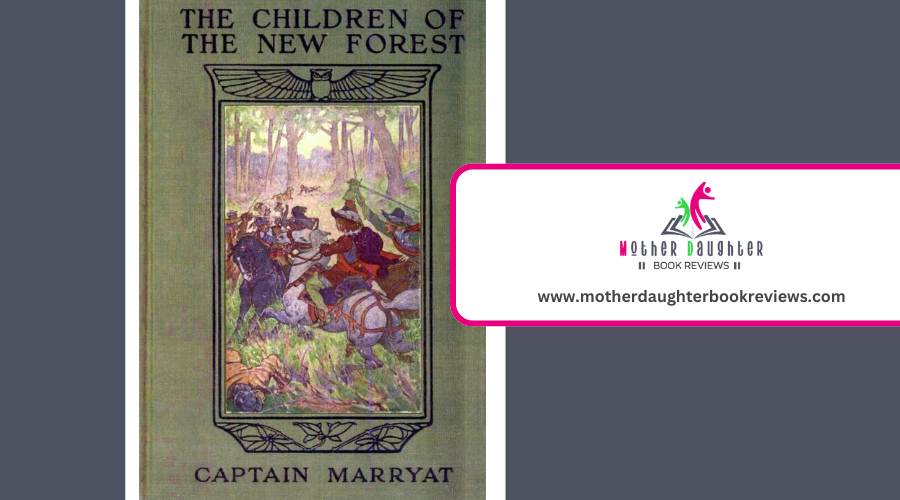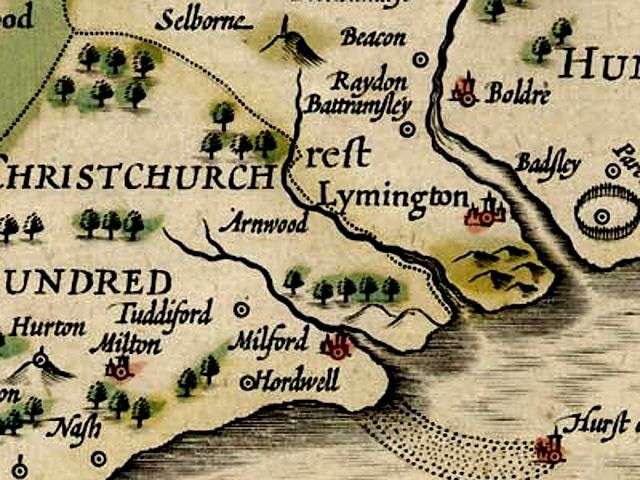Lessons from The Children of the New Forest

In "The Children of the New Forest," you'll follow the Beverley children as they navigate the challenges of surviving in the wilderness after their estate is destroyed. Orphaned by the English Civil War, they learn to live off the land, gather food, and build shelters while evading capture by soldiers. Their expedition through the New Forest is filled with adventure and danger, testing their resourcefulness and bravery.
The Beverley Children's Plight
The Beverley children's plight begins with the devastation of their family estate during the English Civil War, leaving them orphaned and vulnerable. Imagine you're one of the Beverley kids, suddenly thrust into a world of uncertainty and danger. Your once grand home is gone, and with it, the security and comfort you knew. You're faced with the harsh reality of survival at a young stage, with no family left to protect or guide you.
As the oldest, you'd feel the weight of responsibility for your younger siblings. Decisions about where to go and how to stay safe fall squarely on your shoulders. The threat of capture by Parliamentary soldiers looms large, driving you to hide and move constantly. You'd need to rely on your wits and courage, often feeling the pangs of fear and hunger, but pushing through for the sake of your family.
In this chaotic time, you'd have to grow up fast, learning to trust the few allies you find and to remain ever vigilant. Your expedition is one of resilience and bravery, steering through a treacherous landscape with the hope of one day finding stability again.
Life in the New Forest
Adapting to life in the New Forest presents a new set of challenges and opportunities for the Beverley children. You'll find that they must quickly learn to navigate this dense, mysterious woodland, filled with both danger and beauty. The forest becomes their home after their family estate is destroyed, forcing them to rely on their wits and each other.
In the New Forest, the children encounter diverse wildlife and natural resources, which they learn to use for survival. They must figure out how to gather food, find clean water, and build shelter, all while staying hidden from those who might wish them harm. The forest isn't just a place of refuge; it also becomes a classroom where they learn new skills and uncover more about themselves.
The children form a tight-knit community, each taking on different roles to guarantee their collective well-being. You'll see them develop a sense of responsibility and resilience, which are vital in their new life. As they adapt, they also learn to appreciate the forest's tranquility and beauty, finding moments of peace amidst their struggles. This life in the New Forest shapes their characters profoundly, preparing them for future challenges.
Adapting to Wilderness
Maneuvering the wilderness demands more than just courage; it requires keen observation and adaptability. As you explore "The Children of the New Forest," you'll see how Edward and his siblings master survival in the dense, untamed woods. They quickly learn that thriving in the wild calls for resourcefulness and the ability to respond to ever-changing conditions.
To adapt effectively, they focus on several key strategies:
- Learning from Nature: Observing animal behaviors helps them find food and avoid danger. You'll notice how they mimic birds and animals to gather significant survival information.
- Building Shelter: Crafting sturdy, weather-resistant shelters is fundamental. They use natural resources creatively, proving that ingenuity is crucial when conventional tools are unavailable.
- Foraging Skills: Identifying edible plants and understanding seasonal changes in vegetation become second nature. You'll find their knowledge of flora impressive and inspiring.
- Teamwork and Roles: Each sibling takes on specific roles, enhancing their collective strength. By sharing responsibilities, they guarantee everyone's well-being.
As you read, you'll appreciate how these skills are not only about surviving but also about thriving in the wilderness. It's a reflection of human adaptability and resilience, demonstrating that with the right mindset, you can overcome any wild environment.
Challenges and Hardships

Maneuvering the trials of the New Forest isn't just about survival skills; it's about facing and overcoming relentless challenges and hardships. You'll find that the characters in "The Children of the New Forest" must contend with nature's unforgiving elements—harsh weather, treacherous terrain, and the constant threat of predators. Each day presents new obstacles that test their endurance and resolve.
As you read, you'll notice how the characters confront not just physical but emotional challenges. Separation from loved ones and the uncertainty of their future weigh heavily on their minds. These hardships demand resilience and the ability to push forward even when hope seems distant.
Moreover, the children must deal with the external threat of being uncovered by their enemies. The political turmoil of the English Civil War adds an extra layer of danger, as they must remain hidden and cautious at all times. Their need to stay vigilant and outwit those who seek to capture them adds to their daily struggles.
Resourcefulness and Ingenuity
In "The Children of the New Forest," the children's resourcefulness and ingenuity shine in their ability to adapt to their environment and think on their feet. You'll find yourself amazed at how they tackle the challenges of living in the wild. They don't just survive; they thrive by using their wit and creativity. Their ability to make the most of what they have around them is inspiring and demonstrates that even young individuals can handle tough situations with the right mindset.
Here's how they exhibit their resourcefulness and ingenuity:
- Foraging for Food: They identify edible plants, hunt, and fish to sustain themselves.
- Building Shelter: Using natural materials, they construct sturdy shelters to protect themselves from the elements.
- Crafting Tools: From simple traps to fishing rods, they create necessary tools from available resources.
- Navigating the Forest: They learn to read natural signs and use the landscape to their advantage.
These examples illustrate how the children turn obstacles into opportunities. Their story is a reflection of the human spirit's resilience and the importance of quick thinking and adaptability in survival situations. You'll be left feeling inspired by their clever solutions and determined mindset.
Bonds of Family and Friendship
The bonds of family and friendship in "The Children of the New Forest" are the emotional lifelines that sustain the characters through their trials. As you read, you'll notice how the Beverley children—Edward, Humphrey, Alice, and Edith—rely on one another for support and courage in the face of adversity. Their shared experiences and mutual care form a tight-knit unit that helps them overcome the challenges of living in the forest.
Friendship also plays an essential role. From the support of their loyal servant, Jacob Armitage, to the alliances they form with others in the forest, these relationships provide not only practical assistance but also emotional strength. You'll find that these bonds enrich the story, adding layers of depth to the characters' development and making their survival believable and relatable.
In moments of crisis, it's the strength of these connections that keeps the characters going. By valuing and protecting one another, they reveal the importance of loyalty and trust. As you follow their adventure, you'll see how these bonds create a foundation that's as significant as any physical resource in their fight for survival and exploration.
Historical Backdrop
Set against the turbulent backdrop of the English Civil War, "The Children of the New Forest" engages you in a time of political upheaval and social change. As you explore this historical setting, you'll witness the clash between Royalists and Parliamentarians, a conflict that reshaped England. The author, Captain Frederick Marryat, masterfully weaves real historical events into the fabric of the story, making the past come alive for young readers.
In this period, you'll encounter:
- The Destruction of Arnwood: The children's ancestral home is burned down by Cromwell's soldiers, forcing them to flee and survive on their own.
- Royalist vs. Parliamentarian Conflict: The story highlights the deep divisions within society, with characters embodying the ideologies of both sides.
- Secret Identities: The children must conceal their true heritage to avoid persecution, adding layers of suspense and intrigue.
- Life in Hiding: Experience the constant tension and resourcefulness required to live undetected in the New Forest.
Through these elements, "The Children of the New Forest" engages you in a vivid and dynamic historical period, making the past not just a backdrop, but a critical component of the narrative.
Nature's Role in Survival
Nature becomes a silent yet powerful ally for the children as they navigate their new lives in the New Forest. You'll notice how the forest provides them with food, shelter, and a sense of security. The lush trees offer a natural canopy, shielding them from the elements. You can almost feel the cool shade and hear the rustling leaves as they make their way through the dense woodland.
They learn to recognize edible plants and berries, giving them sustenance. The forest's streams provide fresh water, crucial for their survival. You see how they adapt, using knowledge of the land to hunt and gather. Nature's resources become their tools and weapons, empowering them to fend for themselves.
The Spirit of Adventure
You'll find that the young protagonists in "The Children of the New Forest" aren't merely surviving; they're thriving through their bold and daring escapades. Each day presents new challenges, but it's their unyielding sense of adventure that propels them forward.
Imagine traversing through dense forests, living off the land, and evading capture during the English Civil War. You'd need more than just survival skills; you'd need a thirst for exploration and courage to face the unknown. This spirit of adventure is infectious, pulling you into their world and making you root for their success.
Wrapping Up
The children's adventures teach you that life is an ongoing expedition filled with risks and rewards. Whether they're foraging for food, building shelters, or outsmarting their enemies, their actions show that adventure isn't just about the destination—it's about the journey and the growth that comes with it. By embracing the spirit of adventure, you learn to see every obstacle as an opportunity, turning each moment into a chance to navigate, adapt, and ultimately, thrive.




